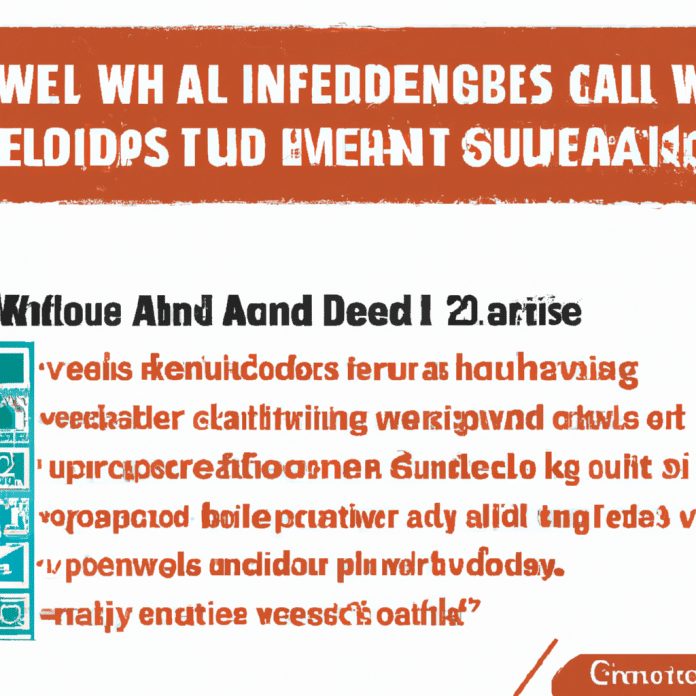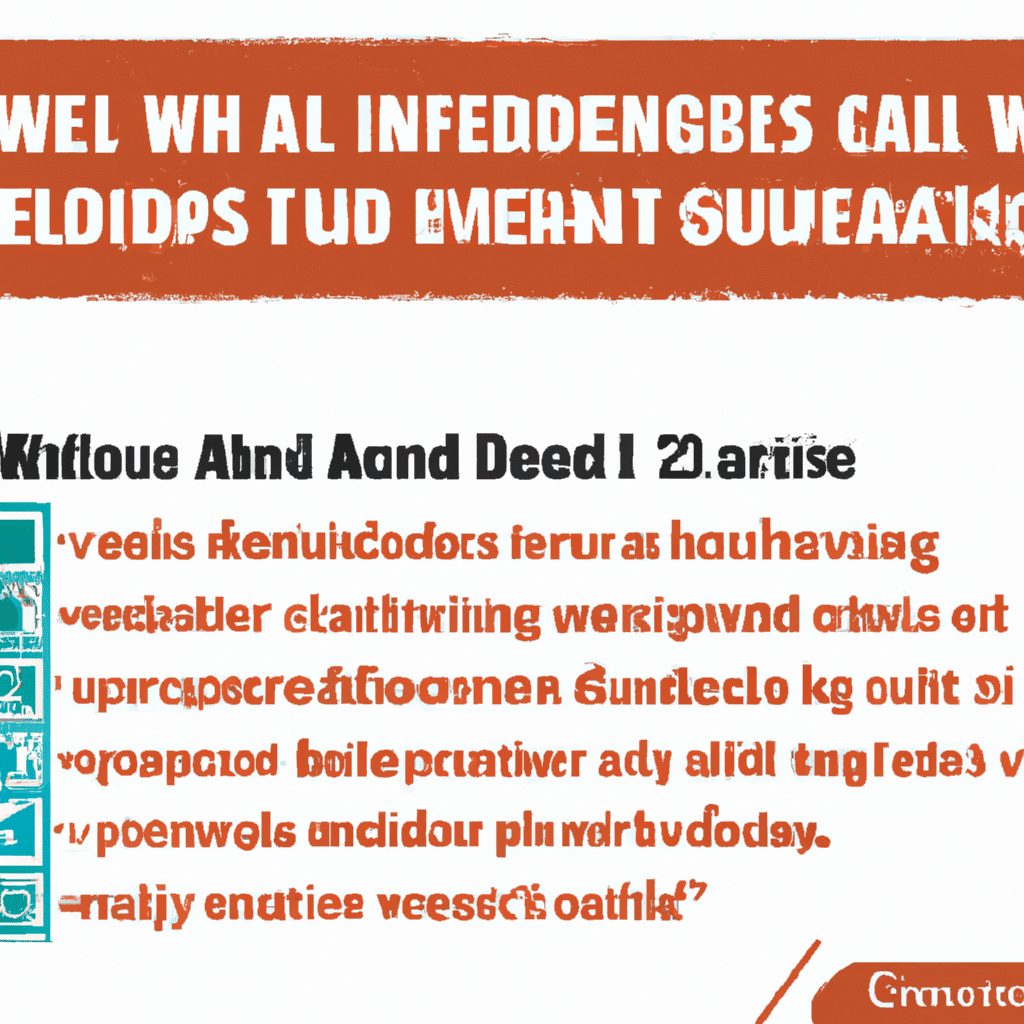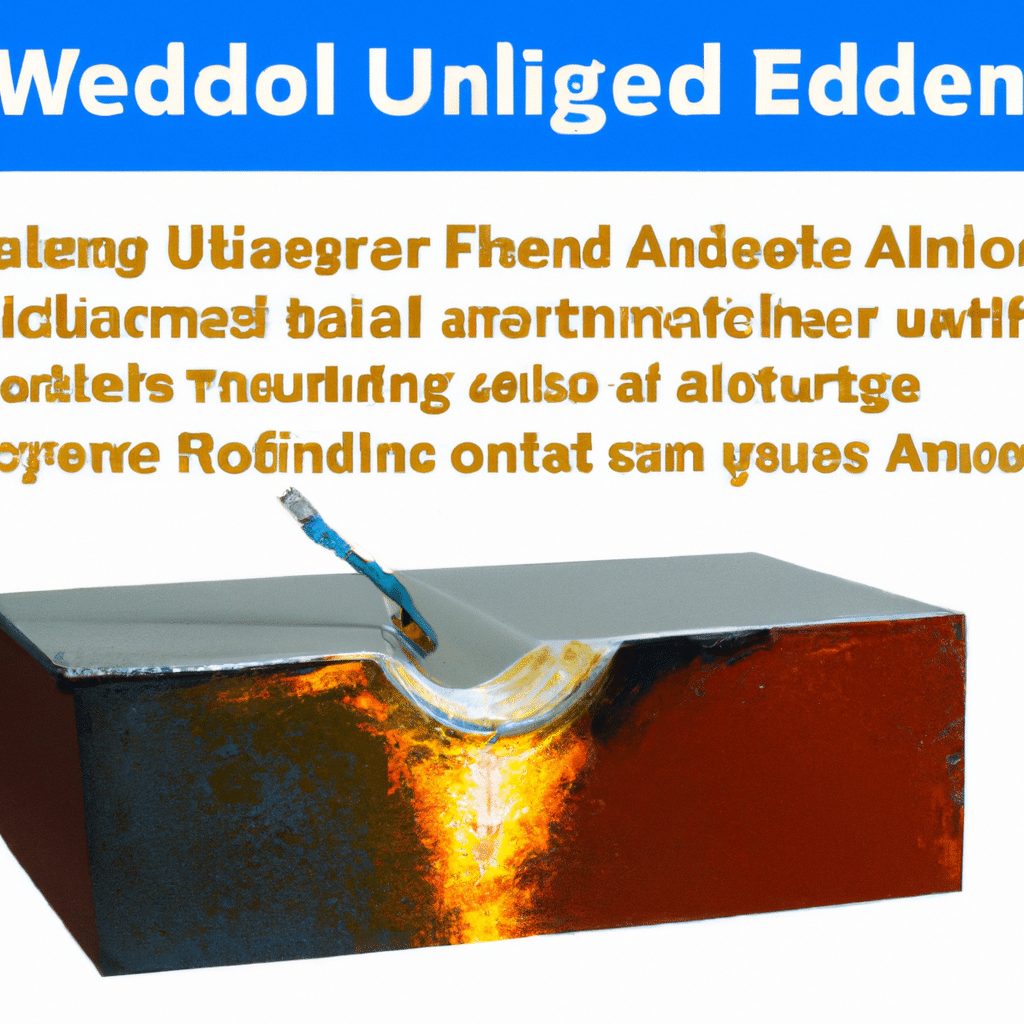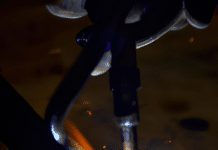In the world of welding, there is a common challenge faced by professionals known as weld underfill. This phenomenon refers to the excess weld metal that accumulates at the base of a weld joint, impacting its integrity and strength. While it may seem like a minor issue, weld underfill can have significant consequences, leading to costly repairs and compromised safety. However, fear not, as we delve into the world of welding techniques and best practices, we will guide you on how to effectively prevent weld underfill, ensuring top-notch quality and durability in your welding projects.
Review contents
Understanding Weld Underfill
Weld underfill refers to a condition in welding where there is an insufficient amount of weld metal in a joint, resulting in an incomplete fusion or penetration. It occurs when the weld bead is not properly formed or does not adequately fill the joint, leaving gaps or voids. This can compromise the structural integrity and strength of the weld, making it vulnerable to failure under stress.
Why is weld underfill a concern in welding?
Weld underfill is a concern in welding because it can lead to several issues that compromise the quality and performance of the weld. Firstly, underfill can weaken the joint, reducing its load-carrying capacity and making it more susceptible to fatigue and failure. Secondly, underfill can create stress concentration points, which can contribute to the development of cracks and weld defects. Additionally, underfill can lead to corrosion and rusting of the joint, compromising its durability and longevity. Therefore, it is crucial to understand the common causes of underfill and employ appropriate welding techniques to prevent its occurrence.
Common Causes of Weld Underfill
Insufficient weld bead size
Insufficient weld bead size is a common cause of underfill. When the weld bead is too small, it may not adequately fill the joint, resulting in gaps and voids. This can happen due to various factors, including improper welding technique, incorrect wire feed and current settings, or inadequate heat input. It is essential to optimize the weld bead size to ensure sufficient coverage of the joint and proper fusion.
Improper travel speed
Travel speed refers to the rate at which the welding torch or electrode moves along the joint. Inadequate travel speed can lead to underfill because if the torch moves too slowly, excessive heat is applied to the joint, resulting in burn-through and insufficient weld metal to fill the joint properly. On the other hand, if the travel speed is too fast, the weld metal may not have enough time to adequately fuse and penetrate the joint, resulting in underfill. Therefore, it is crucial to control the travel speed to achieve optimal weld quality and prevent underfill.
Inadequate joint preparation
Proper joint preparation is essential for achieving a high-quality weld, and inadequate joint preparation can contribute to underfill. If the joint is not cleaned and free from contaminants, such as grease, oil, or rust, the weld quality can be compromised. Additionally, if the joint fit-up and alignment are not precise, it can lead to gaps or misalignment, resulting in underfill. Therefore, it is essential to ensure thorough joint preparation to prevent underfill and promote proper fusion.
Inadequate heat input
Inadequate heat input can also cause underfill in welding. Heat input refers to the amount of heat energy applied to the joint during the welding process. If the heat input is insufficient, the weld metal may not reach the necessary temperature for proper fusion, leading to underfill. Factors such as incorrect current settings, inadequate voltage, or improper stickout can contribute to inadequate heat input. It is vital to monitor and adjust the welding parameters to ensure appropriate heat input and prevent underfill.
Welding Techniques to Prevent Underfill
Selecting appropriate welding process
Choosing the right welding process is crucial for preventing underfill. Different welding processes, such as MIG, TIG, or stick welding, have varying characteristics and suitability for specific materials and joint types. By selecting the most appropriate welding process, you can ensure better control over the weld bead size, travel speed, and heat input, reducing the risk of underfill.
Optimizing the weld bead size
Optimizing the weld bead size is essential to prevent underfill. Understanding the required weld size based on the joint design and material thickness is crucial. By determining the proper wire feed and current settings, you can achieve the desired weld bead size. It is also important to consider the voltage and stickout, as these factors impact the weld quality and penetration. Additionally, using multiple passes when necessary can help ensure proper fusion and avoid underfill.
Controlling travel speed
Controlling the travel speed is vital for preventing underfill. It is essential to maintain a consistent and appropriate travel speed throughout the welding process. Avoiding excessively fast or slow travel speeds is crucial, as both can contribute to underfill. By finding the optimal travel speed for the specific welding parameters and joint type, you can achieve adequate fusion and prevent underfill.
Proper joint preparation
Proper joint preparation is key to preventing underfill. Thoroughly cleaning and removing contaminants from the joint surface is necessary to ensure proper fusion. Additionally, ensuring proper fit-up and alignment of the joint is crucial. Utilizing appropriate joint designs, such as beveling or chamfering, can also contribute to better fusion and prevent underfill. By investing time and effort in adequate joint preparation, you can minimize the risk of underfill and improve the weld quality.
Adjusting heat input
Monitoring and adjusting the heat input is essential for preventing underfill. By closely observing the welding parameters, such as current, voltage, and travel speed, you can ensure the appropriate heat input for the specific joint and material. If necessary, preheating the joint or implementing post-weld heat treatment can also help prevent underfill by increasing the heat input. It is crucial to have proper control over the heat input to achieve optimal weld quality and prevent underfill.
Welding Process Selection
Considerations for choosing a welding process
When selecting a welding process, several factors should be considered to prevent underfill. Firstly, the type of material being welded is important, as different processes have varying suitability for specific materials. Secondly, the joint type and configuration should be taken into account, as some processes may be better suited for certain joint designs. Additionally, factors such as the desired weld quality, productivity, and cost-effectiveness should be considered when choosing a welding process to prevent underfill effectively.
Matching welding process to material and joint type
Matching the welding process to the material and joint type is crucial to prevent underfill. For example, MIG welding is commonly used for welding mild steel and stainless steel, while TIG welding is often preferred for aluminum and non-ferrous metals. Understanding the characteristics and limitations of different welding processes and selecting the one best suited for the specific material and joint type can help achieve optimal weld quality and prevent underfill.
Optimizing Weld Bead Size
Understanding the required weld size
To prevent underfill, it is important to understand the required weld size. This can be determined based on the joint design, material thickness, and welding code specifications. By having a clear understanding of the required weld size, you can adjust the welding parameters to achieve the desired bead size and ensure proper fusion.
Determining the proper wire feed and current settings
Determining the proper wire feed and current settings is crucial for optimizing the weld bead size. These parameters directly affect the amount of weld metal deposited and the width of the weld bead. By adjusting the wire feed speed and current to the appropriate levels for the specific material and joint, you can ensure sufficient weld bead size and prevent underfill.
Adjusting voltage and stickout
Voltage and stickout are important factors to consider when optimizing the weld bead size. The voltage determines the heat intensity and penetration depth, while the stickout refers to the distance between the electrode tip and the workpiece. By adjusting the voltage and stickout to the proper levels, you can control the weld bead shape and size, preventing underfill.
Using multiple passes if necessary
In some cases, using multiple passes may be necessary to achieve the required weld bead size and prevent underfill. Multiple passes involve welding over the initial weld bead to fill any gaps or voids and ensure proper fusion. By carefully planning and executing multiple passes, you can achieve the desired weld size, minimize the risk of underfill, and enhance the overall weld quality.
Controlling Travel Speed
Maintaining consistent travel speed
Maintaining a consistent travel speed is crucial for preventing underfill. Consistency in travel speed ensures that the weld bead is evenly formed and properly fuses with the joint. To achieve consistent travel speed, welders should maintain a steady hand motion and carefully control the speed at which they move along the joint.
Avoiding excessively fast or slow travel speed
Both excessively fast and slow travel speeds can contribute to underfill. If the travel speed is too fast, the weld metal may not have enough time to properly fuse and penetrate the joint, leading to underfill. On the other hand, if the travel speed is too slow, excessive heat may be applied to the joint, resulting in burn-through and insufficient weld metal. It is essential to find the optimal travel speed for the specific welding parameters and joint type to prevent underfill effectively.
Proper Joint Preparation
Cleaning and removing contaminants
Proper joint preparation involves thorough cleaning and removal of contaminants from the joint surface. This is essential to ensure proper fusion and prevent underfill. Contaminants such as grease, oil, rust, or paint can hinder the welding process and compromise the weld quality. By thoroughly cleaning the joint surface before welding, you can eliminate potential sources of underfill and achieve better weld results.
Ensuring proper fit-up and alignment
Ensuring proper fit-up and alignment of the joint is crucial for preventing underfill. If the joint fit-up is poor or misaligned, it can result in gaps or insufficient fusion, leading to underfill. Proper fit-up involves ensuring that the components to be welded are properly aligned and have the correct gap or spacing. By paying attention to fit-up and alignment, welders can minimize the risk of underfill and improve the overall weld quality.
Utilizing appropriate joint designs
Proper joint design plays a significant role in preventing underfill. Different joint designs, such as beveling or chamfering, may be required for specific applications to ensure proper fusion. Utilizing appropriate joint designs helps provide better access for the welder and creates a conducive environment for achieving adequate weld metal deposition. By employing suitable joint designs, welders can reduce the likelihood of underfill and enhance the weld quality.
Adjusting Heat Input
Monitoring and controlling the welding parameters
Monitoring and controlling the welding parameters is essential for adjusting the heat input and preventing underfill. Parameters such as current, voltage, and travel speed directly influence the heat input. By closely monitoring these parameters during the welding process, welders can make real-time adjustments to maintain the appropriate heat input for the specific joint and material, preventing underfill.
Using preheating or post-weld heat treatment if necessary
In some cases, preheating the joint or implementing post-weld heat treatment may be necessary to adjust the heat input and prevent underfill. Preheating involves heating the joint before welding to improve fusion and reduce the risk of underfill. Post-weld heat treatment can also be used to alleviate residual stresses and ensure proper weld integrity. By utilizing these heat treatments when necessary, welders can effectively prevent underfill and enhance the overall weld quality.
Ensuring Proper Welding Equipment
Selecting appropriate welding equipment
To prevent underfill, it is crucial to select appropriate welding equipment. Different welding processes and applications require specific equipment to achieve optimal results. By choosing the right welding machine, torch, electrode, and other accessories, you can ensure better control over the welding parameters and minimize the risk of underfill.
Regular maintenance and calibration of equipment
Regular maintenance and calibration of welding equipment are essential to prevent underfill. Lack of maintenance can result in equipment malfunctions or inconsistencies, leading to poor weld quality and potential underfill. It is important to periodically inspect, clean, and calibrate the welding equipment to ensure its proper functioning. By maintaining and calibrating the equipment regularly, you can prevent underfill caused by equipment-related issues.
Training and Qualification
Providing adequate training to welders
Providing adequate training to welders is crucial for preventing underfill. Proper training ensures that welders have the necessary knowledge and skills to perform welding tasks effectively. Training should cover welding techniques, joint preparation, equipment operation, and safety protocols. By investing in comprehensive training programs, companies can equip their welders with the skills and expertise needed to prevent underfill and produce high-quality welds.
Implementing qualification procedures
Implementing qualification procedures is essential to ensure that welders meet specific industry standards and requirements. Qualification procedures involve testing and evaluating the welders’ skills and performance. By implementing these procedures, companies can identify any weaknesses or areas for improvement in welders’ abilities to prevent underfill effectively.
Regularly evaluating and improving welding practices
Regularly evaluating and improving welding practices is critical for preventing underfill. Consistent review and analysis of welding processes, procedures, and performance can help identify opportunities for enhancement. By implementing continuous improvement measures and incorporating feedback from welders and quality control personnel, companies can continuously refine their welding practices to prevent underfill and achieve superior weld quality.
In conclusion, weld underfill poses a significant concern in welding due to its potential impact on weld quality, durability, and integrity. By understanding the common causes of underfill and employing appropriate welding techniques, such as selecting the appropriate welding process, optimizing the weld bead size, controlling travel speed, ensuring proper joint preparation, and adjusting heat input, welders can effectively prevent underfill. Additionally, ensuring proper welding equipment, providing adequate training and qualification procedures, and regularly evaluating and improving welding practices are vital for achieving consistent weld quality and preventing underfill. By implementing these measures, welders can minimize the risk of underfill and produce high-quality welds that meet the desired standards and requirements.





























